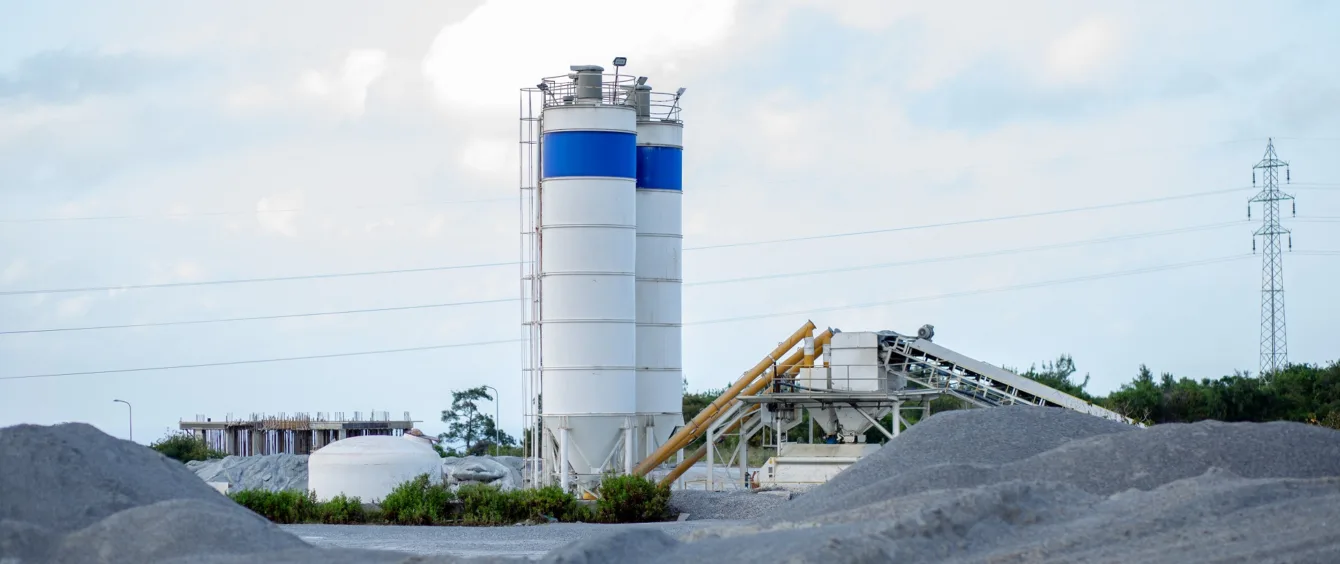Cement is pretty much everywhere you care to look. As a binder for concrete and mortar, it is one of the most widely-used materials in modern society. And although global cement consumption fell in 2022, the long-term use trend is upward.
Some 4.4 billion people on the planet live in cities, 56% of the world‘s population. This proportion is expected to rise close to 70% by 2050, according to the World Bank.
More cities mean lots of cement. However, cement production is so carbon intensive and takes place on such a scale that it accounts for 6-7% of global carbon emissions. And the production of cement has become more rather than less carbon intensive in recent years.
The emissions intensity of cement production rose by about 1.5% a year between 2015 and 2021, according to the International Energy Agency (IEA), which says it needs to fall by 3%/yr through 2030 to get on track with a net zero carbon by 2050 pathway.
Cement production – a quick guide
Cement production needs a lot of heat. The principal material is limestone or chalk, which is crushed and ground together with other materials such as clay or shale. The mixture is then heated in a rotating kiln to temperatures of up to 1,450°C.
The resulting product is known as ‘clinker’. This is ground down to a fine powder and more materials are added in small quantities, such as gypsum, to give the final product specific characteristics ideal for its intended use.
Around 40% of the carbon emissions result from the energy inputs used for heat. To keep costs low, cement kilns use the cheapest and often most carbon heavy fuels, such as high sulfur fuel oil, waste petrochemicals and coal. The majority of the remaining emissions result from the chemical reaction which takes place during heating.
Greening cement production
The process presents a number of options for decarbonising cement production, for example targeting the energy inputs, the materials used, or capturing and storing the carbon emitted.
A relatively simple and widely-employed method is to mix the clinker with other suitable materials such as fly ash and slag. A lower proportion of clinker reduces the carbon intensity of the end product. However, fly ash is a by-product of coal-fired power generation and its availability is diminishing as the power sector moves to cleaner forms of electricity generation.
Greening the energy inputs is another good line of attack – one in which renewable energy can play a key role.
Cement producer Holcim, for example, has signed a power purchase agreement for about 71 GWh of clean electricity generated from a 33 MW solar array moderated by a 38.5 MWh battery system at its US plant in Florence, Colorado. The system is expected to reduce the cement plant’s carbon emissions by more than 40,000 tons a year starting from 2025.
Solar Cement and Carbon Capture
Another approach has been taken by companies Synhelion and Cemex using a different form of solar energy – Concentrated Solar Power (CSP). This produces heat in the first
instance, which is then generally transformed into electricity using steam turbines.
The two companies’ innovation is to use the heat from CSP directly to produce clinker. Synhelion’s solar receiver can deliver temperatures above 1,500°C. The first clinker using solar power alone was produced in February 2022 and the two companies are now working to deliver the process at scale.
In Germany, Austria-based company Rohrdorfer has introduced an amine-based carbon capture system to its Rohrdorf cement plant. The trial period started in August 2022 and routine carbon capture was announced in February this year.
The company intends to expand the capture capacity to 1,500 tons a day and has a target of carbon neutral cement production by 2038. The captured CO2 is used industrially, but demonstrating that capture is possible represents an important step towards larger scale carbon capture and storage.
Rome was built with green cement
Some companies are focussing on the materials used in cement production and have gone back to the ancient Romans for inspiration. The Romans built with pozzolanic cement using a volcanic powder found near Vesuvius. Today the most widely produced type of cement is Ordinary Portland Cement (OPC) because it dries more quickly.
However, pozzolanic cement, which can be made from natural or artificial pozzolanic materials, is stronger over time and more durable. US company Green Cement has re-engineered pozzolanic cement to dry at the same speed as OPC. It uses processed fly ash and natural pozzolans to replace between 50-100% of the OPC content.
The company says its GCI pozzolanic cement has no carbon emissions and costs less than OPC. Green Cement has already produced over 1.1 million tons and is starting to recover fly ash from the landfills created by decades of coal-fired power generation in the US. This promises environmental land reclamation alongside green cement production.
US-based Solidia has taken a different approach to rethinking the materials used, but like Green Cement, argues that it is OPC that is the core problem. Solidia uses low lime containing calcium silicates which allows its clinker to be produced at lower temperatures than OPC, saving energy and reducing emissions.
Moreover, the cement reacts with CO2 rather than water, allowing it to sequester carbon during the concrete curing process. The CO2 — acquired from flue waste gases — reacts with the cement to form calcium carbonate. The water used in the process can be recovered.
By targeting all of the emissions points along the chain of cement and concrete production and use, from energy inputs to more efficient processes and less carbon intensive materials, the goal of green cement appears achievable.
